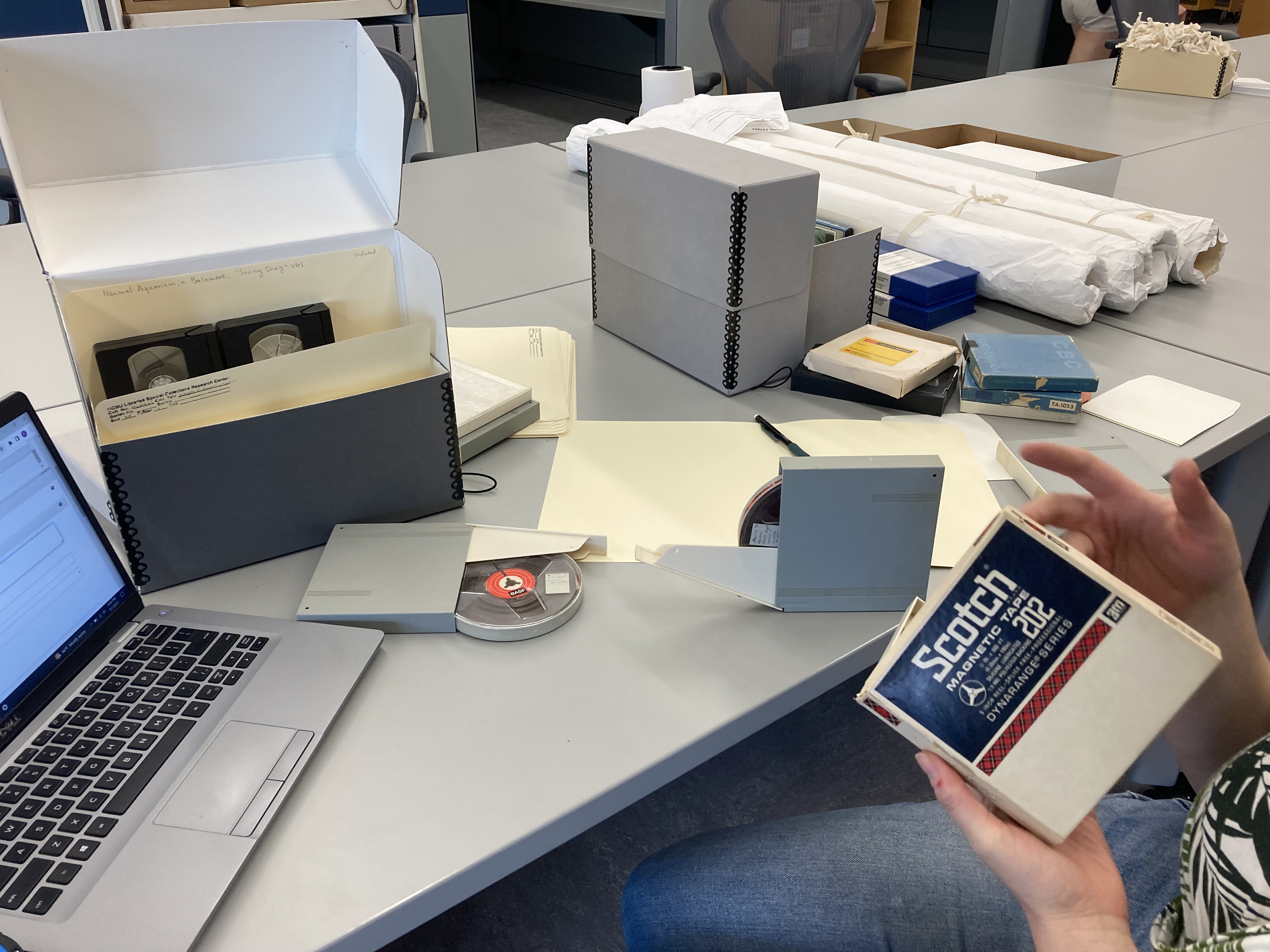Materials being processed (in this case, MC 00220, the Zeno Payne Metcalf Entomology Research Collection)
What is Archival Processing? An Introduction
In special collections and archives, we partake in a mysterious activity called “archival processing.” This is an essential and basic part of making primary source materials accessible to researchers and yet most people not in the field are unfamiliar with what it means. So what even is archival processing, anyway? And why is it important?
These quotes from graduate student processors help to demystify what archival processing is:
Imagine a box of stuff from your grandparents' attic. A lot of the time, that's what the donations we receive look like. To process that box of stuff for our archives, we go through it, figure out what format all the materials are in, when they were produced, and which materials relate to other materials. Then we organize the materials into acid-free folders and boxes to help preserve them, and give those folders and boxes names and descriptions that will help future researchers figure out what's going on inside.
-Fran Fleming
Archival processing is the process of sifting through, arranging, and describing archival materials in a collection so that the information is easily accessible. Processing helps us to make sense of a collection and make it easier for patrons to know what kinds of materials are available to them.
-Katelyn Cuomo

These interpretations get to the core of what archival processing is. At the end of the day, processing is placing materials of historical importance into containers for long term preservation and producing an inventory of those materials that can be accessed by researchers. This sounds straightforward enough, but processors must make a myriad of judgment calls when processing a collection. Decisions regarding housing/storage of materials, description, how new materials fit in with existing materials, and preservation are just a few of the things processors must consider.
In the "What Is Archival Processing?" series we'll explore different aspects of processing and how each one helps researchers discover materials. Subsequent posts will discuss rehousing, arranging, describing, and reparative archival description. Rehousing (or storage) is the act of physically stabilizing archival materials in acid-free containers. Arranging is the process of organizing materials into an order that is best for researchers to discover topics of interest. Describing pertains to the best way to convey information about the items to the researcher. And reparative archival description is the act of contextualizing harmful and/or outdated language that may be present in archival materials or in their description.

This series was inspired by the “Processing: Mysteries from the Archives” livestream, in which Special Collections Librarian Taylor Wolford and I discuss and show processed versus unprocessed collections. This video is a great introduction to what archival processing is and to many of the challenges that arise during rehousing, describing, and arranging. Check it out for some real examples of archival materials before and after processing!
If you have any questions or are interested in viewing Special Collections materials, please contact us at library_specialcollections@ncsu.edu or submit a request online. The Special Collections Research Center is open by appointment only. Appointments are available Monday–Friday, 9am–6pm and Saturday, 1pm–5pm. Requests for a Saturday appointment must be received no later than Tuesday of the same week.